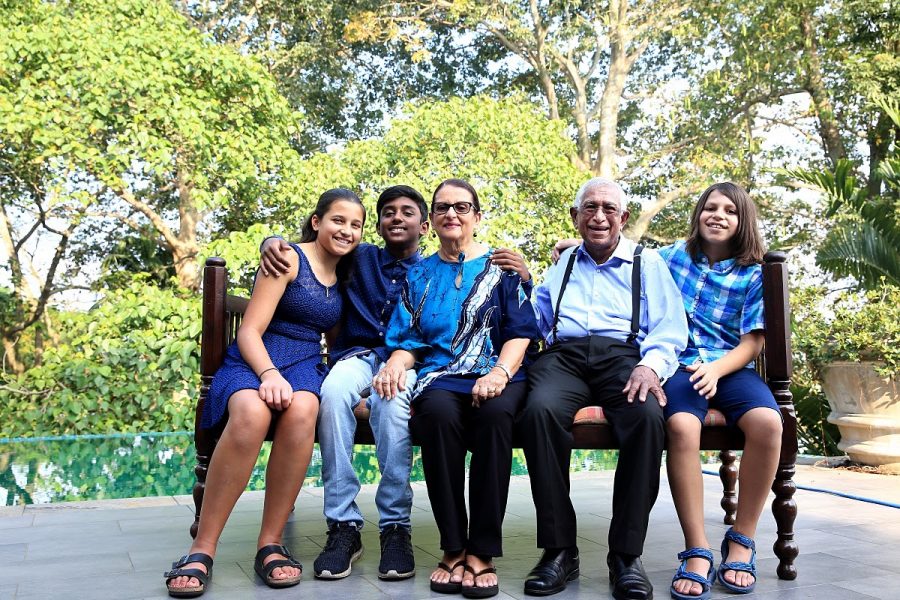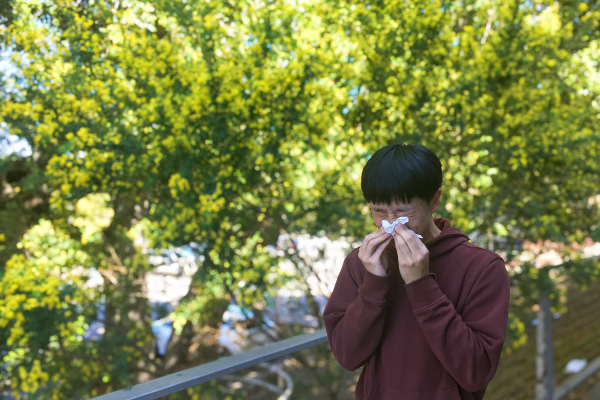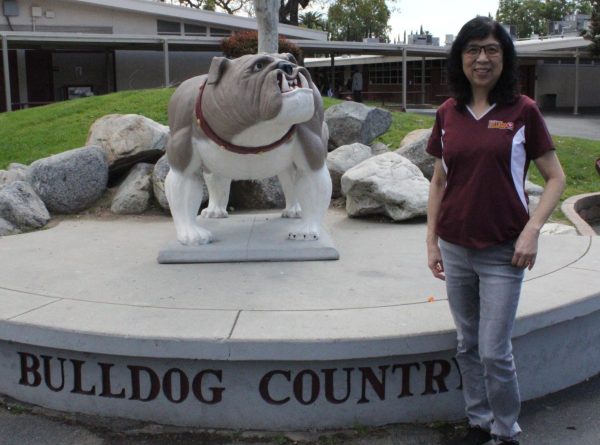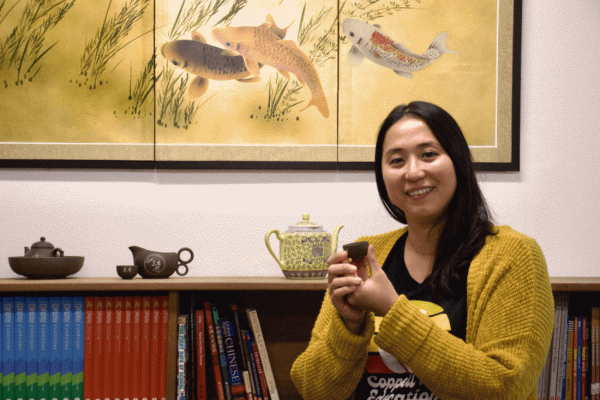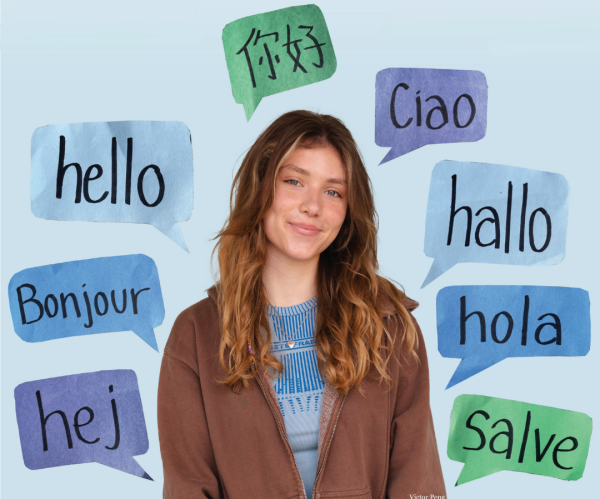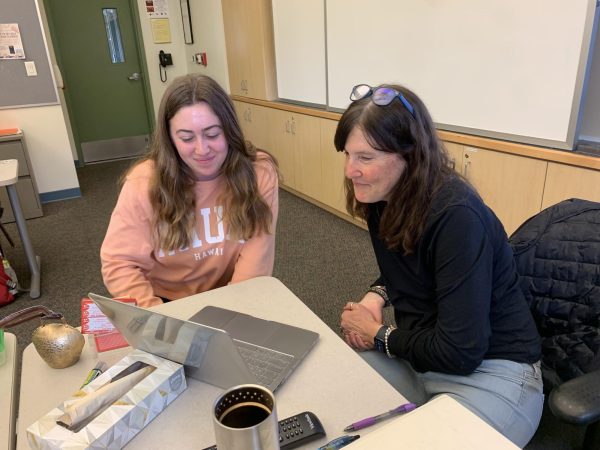Life between two worlds: students cozy up to their cultural backgrounds
Submitted by Audrey Senaratna
Here Senaratna smiles for a photo with her grandparents, brother and cousin in Sri Lanka.
December 1, 2020
Thanks to the staff, environment and many affinity groups at St.Paul Academy and Summit School, a diverse range of holidays from Yom Kippur to Cinco de Mayo are recognized. But despite this, there is still much room for learning about the different cultural backgrounds of every SPA member.
Compared to the traditional “American” holidays like Christmas and Thanksgiving, there are also many celebrations, traditions and cultures students take part in that are often not as represented. And it’s not just special occasions and holidays; it’s also the day to day lifestyles that make everyone in the SPA community perceive and experience the same things differently and uniquely.
The Senaratnas
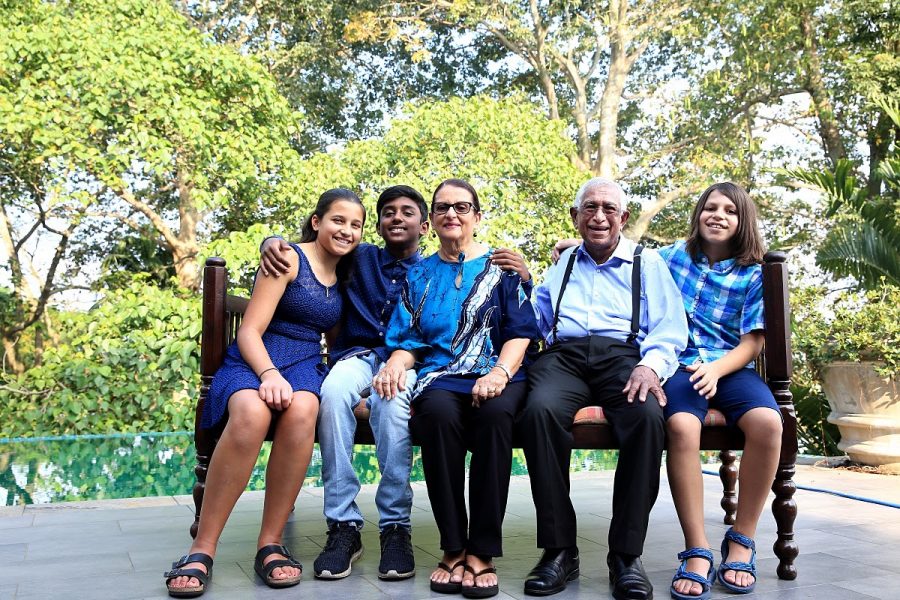
Ninth grader Audrey Senaratna is part Sri Lankan. Even though she and her family don’t celebrate any Sri Lanka holidays, they do celebrate many typical American holidays in Sri Lankan ways. Food is the Senaratna’s bridge between two different cultures.
Senaratna said, “On New Year’s day, my dad [who grew up in Sri Lanka] always makes Kiribath and Seeni Sambol, coconut sticky rice with sweet and spicy onions, and we will also have Pol [coconut] Roti.”
Senaratna finds a lot of beauty in her family’s traditions. She said, “For Christmas we always make Love Cake, which comes from the Deutsch who used to occupy Sri Lanka. It is this super rich and sweet cake with cashews in it. Whenever we go to Sri Lanka, my grandma makes it and we always end up eating too much and feeling sick afterwards, it’s really addicting.”
The mix of Sri Lankan and American cultures has created new traditions for the Senaratnas. The experience truly is one of a kind.
The Garcias
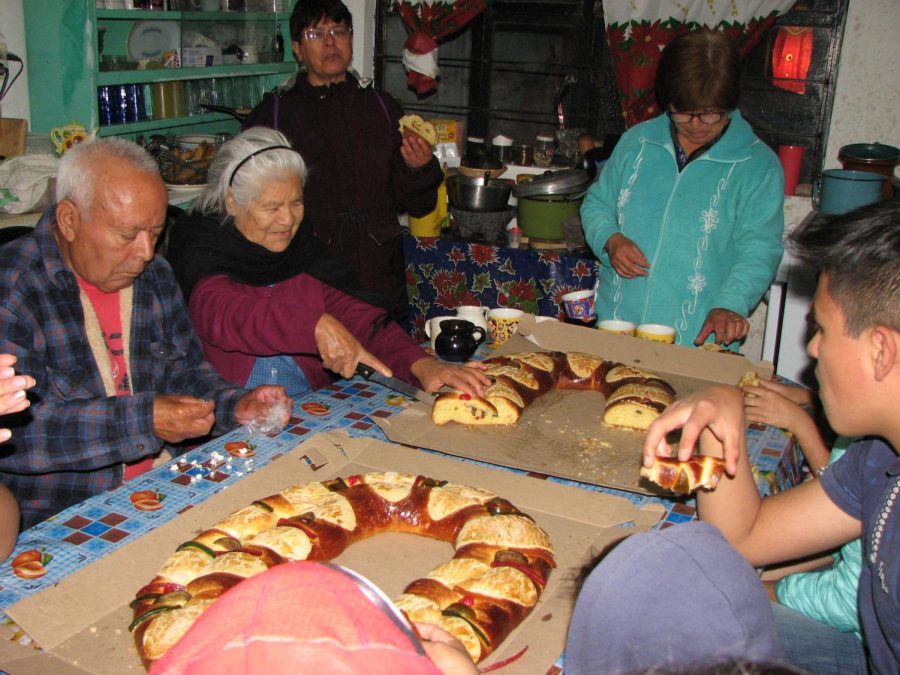
For senior Karla Garcia, her Hispanic and Mexican heritage places a heavy emphasis on both her immediate and extended family in daily life- something that Garcia does not see as the cultural norm in a predominantly white SPA community.
Garcia said, “My family is more family-oriented because I feel like a lot of my friends only see some of their cousins or grandparents on big holidays and they don’t see them often on regular occasions. But with my cousins in Mexico and my cousins here, I see them like every 3 days, obviously not with the pandemic right now, but in regular times I see them really often. I think my culture has made me appreciate my family a lot and made me spend more time with them.”
I think my culture has made me appreciate my family a lot
— senior Karla Garcia
Besides the day-to-day cultural values that Garcia holds dear to her heart, she and her family have also applied their Mexican background to American holidays and vice versa.
Garcia said, “My family celebrates some specific holidays and some overlap [same holidays in different cultures] but I feel like how they’re celebrated is unique to the Hispanic and Latinx culture.”
For example, Christmas and New Year are two holidays that are widely celebrated in both of Garcia’s worlds. In American culture, Christmas is often characterized to the public as Santa Claus and Christmas trees, carols and mistletoe. The American Christmas that society widely perceives it to be is when families open gifts on Christmas morning or even hanging stockings the night before. In a more religious aspect, Christmas also marks an important day to some Christians as it is known as the birthday of Jesus. The celebratory concepts of Christmas, likewise, apply to New Year’s day in America. For New Year celebrations in the U.S., what pops into mind is families getting together for a gathering or more iconically, watching the Times Square Ball Drop in New York City.
However to Garcia, holidays like Christmas and New Year have a significant Mexican cultural presence that others in the SPA community may not recognize. Like the Senaranthas, the Garcia’s celebrate many Americanized holidays in Mexican ways.
“So I feel like [Christmas and New Year] they’re all significant to me in a way but I feel like one of the ones I enjoy the most is Mexico Christmas. I feel like it’s different than here in the U.S. because it’s not as gift oriented. It’s mostly spending time with your family and religion is a part of the tradition,” said Garcia.
Living in the states, Garcia is able to incorporate both American and Mexican culture into her Christmas and New Year.
“We typically go to church on Christmas Eve, and there’s a baby Jesus that gets blessed. We don’t really do gifts on Christmas in Mexico so that’s specific to Hispanic [Mexican] culture,” said Garcia.
Garcia also shared her New Year traditions. She said, “During the New Year there’s 12 grapes at midnight and a new year’s hug. So you just have [eat] 12 grapes leading up to 12 a.m. and then you just give everyone, who you’re celebrating with, a hug.”
You just give everyone, who you’re celebrating with, a hug,
— Garcia
Three Kings Day, or Epiphany on Jan. 6, is another Christian holiday that Garcia is familiar with because of her family and heritage back in Mexico.
“[Three Kings Day] that’s when kids will usually get their gifts in Mexico and they [kids] will go out and buy a balloon and write a little message on it and release the balloon into the air. They write down their hopes and stuff. I don’t celebrate it here in the U.S. but my cousins in Mexico do,” said Garcia.
Although Garcia does not celebrate Three Kings Day like her relatives in Mexico, her own Mexican American way of celebrating it is more than memorable. Garcia said,
“On Three Kings Day there’s a typical Mexican bread that’s called Rosca de Reyes. It’s like a donut shape but a big oval bread and inside of it there’s little plastic baby Jesuses and you cut into it and whoever gets the baby Jesus has to make food for the next celebration. That’s one of my favorite traditions because even here in the U.S. and when I’m in Mexico during the holiday season we’ll do that with all my family. And all my aunts and cousins come and we’re all together eating and having a good time and joking around. That’s one of my favorite memories.”
The Rahmans
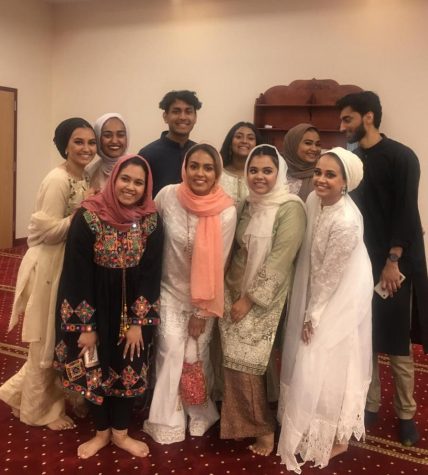
In senior Aman Rahman’s life, her Muslim religious and cultural identity play a large role in her life that isn’t always reflected in the SPA community. Rahman celebrates Eid, which occurs twice a year: Eid al-Fitr, after a 30 day fasting period; and Eid al-Adha, which honors the willingness of Prophet Ibrahim to sacrifice his son, Ismail, under the order of God [Allah].
During both Eids, Rahman and her family do their morning prayers followed by a short sermon at their Mosque. From there, the rest of the day is spent with family, friends and a lot of food. Typically, the Rahmans attend a lot of parties during Eid celebrations but with the past two Eids falling under COVID-19, Rahman and her family had to be more careful, limiting their Eid celebrations to a drive by at the Mosque and handing out goody bags for the younger children.
Eid is something that we have been celebrating ever since I was young… so it’s very special to us.
— senior Aman Rahman
Like the Garcia’s, Rahman’s fondest memories of Eid revolve around family. Rahman said, “Two years ago, in the summer of 2019, my extended family from Toronto, Canada and Chicago all decided to road trip down to Minnesota so that we could all celebrate Eid al-Adha together. They all hadn’t come to Minnesota for at least 5 years so it was very special to have them all at our house. It was super fun because it was nice to have extended family to celebrate with as well. They had loads of fun here too.”
Although many of her SPA classmates do not share the same experiences of Eid with her, the community still shows their understanding and respect for her heritage.
“Eid is something that we have been celebrating ever since I was young because it’s the only major holidays in Islam so it’s very special to us. I always take the day off from school to be with my family so it was very nice when SPA decided to give the day off for the entire school, because I wouldn’t have to worry about missing school and classes. My dad always takes the day off from work too.”
The cultures and traditions of Senaratna, Garcia and Rahman go to show that within a community, big or small, diversity is everywhere. The different cultures each and every student hold onto is valuable and impactful to their life values, morals and the larger community. But the things that can be learned and appreciated from individuals like Senaratna, Garcia, Rahman and many more are not always surface level. Sometimes a little digging and curiosity are required before the beauty can be found.
This story was originally published on The Rubicon on December 1, 2020.
































![IN THE SPOTLIGHT: Junior Zalie Mann performs “I Love to Cry at Weddings,” an ensemble piece from the fall musical Sweet Charity, to prospective students during the Fine Arts Showcase on Wednesday, Nov. 8. The showcase is a compilation of performances and demonstrations from each fine arts strand offered at McCallum. This show is put on so that prospective students can see if they are interested in joining an academy or major.
Sweet Charity originally ran the weekends of Sept. 28 and Oct. 8, but made a comeback for the Fine Arts Showcase.
“[Being at the front in the spotlight] is my favorite part of the whole dance, so I was super happy to be on stage performing and smiling at the audience,” Mann said.
Mann performed in both the musical theatre performance and dance excerpt “Ethereal,” a contemporary piece choreographed by the new dance director Terrance Carson, in the showcase. With also being a dance ambassador, Mann got to talk about what MAC dance is, her experience and answer any questions the aspiring arts majors and their parents may have.
Caption by Maya Tackett.](https://bestofsno.com/wp-content/uploads/2024/02/53321803427_47cd17fe70_o-1-1200x800.jpg)
![SPREADING THE JOY: Sophomore Chim Becker poses with sophomores Cozbi Sims and Lou Davidson while manning a table at the Hispanic Heritage treat day during lunch of Sept 28. Becker is a part of the students of color alliance, who put together the activity to raise money for their club.
“It [the stand] was really fun because McCallum has a lot of latino kids,” Becker said. “And I think it was nice that I could share the stuff that I usually just have at home with people who have never tried it before.”
Becker recognizes the importance of celebrating Hispanic heritage at Mac.
“I think its important to celebrate,” Becker said. “Because our culture is awesome and super cool, and everybody should be able to learn about other cultures of the world.”
Caption by JoJo Barnard.](https://bestofsno.com/wp-content/uploads/2024/01/53221601352_4127a81c41_o-1200x675.jpg)




